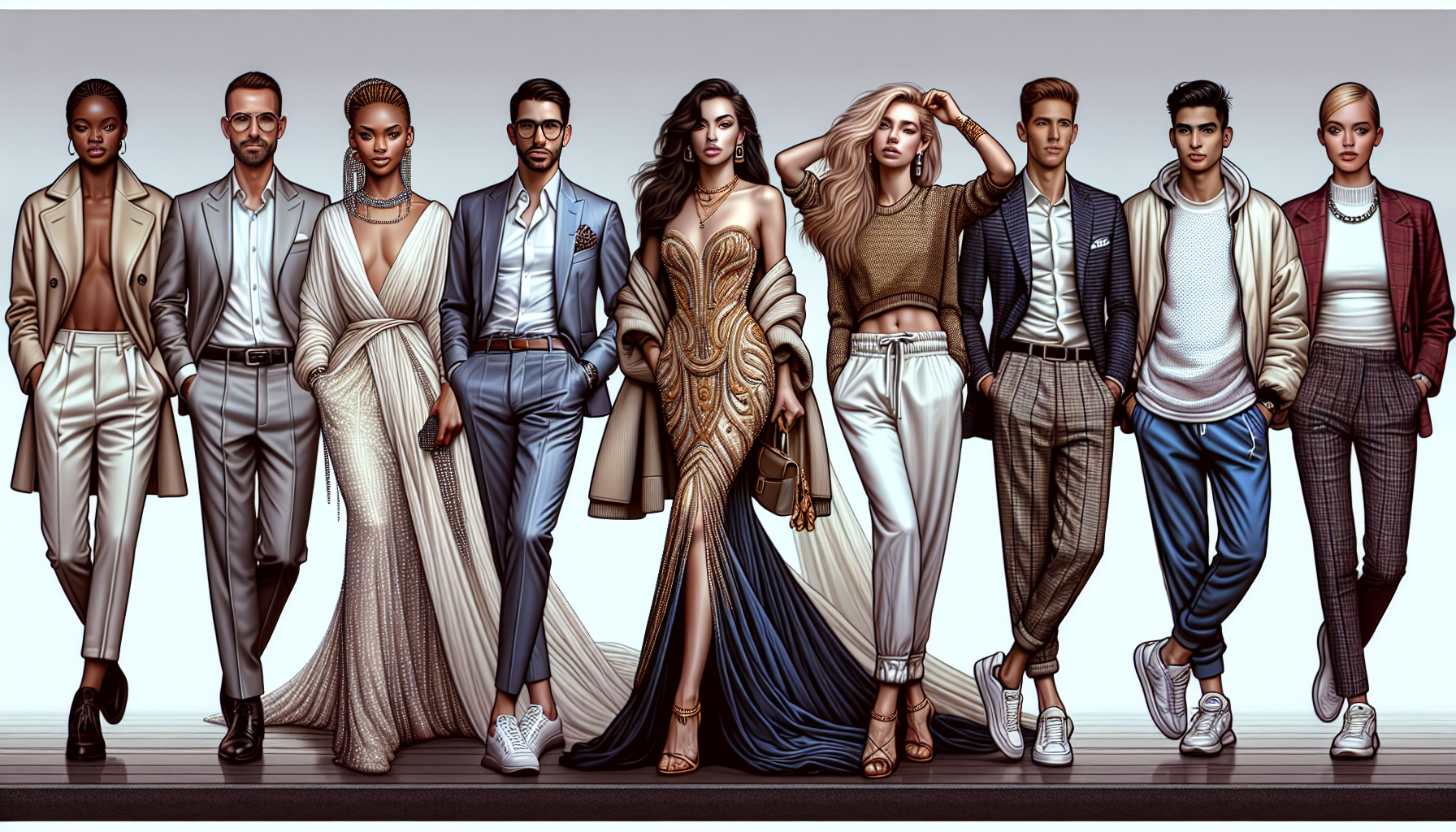Introduction to Fashion Psychology
Fashion is more than just the clothes we wear to cover our bodies; it is a language all its own—a method of non-verbal communication that conveys many messages to both the wearer and the observer. It can signal social status, personality traits, emotions, and even beliefs. Fashion psychology examines the relationship between our clothing choices and the workings of our mind, offering insights into how our attire reflects our internal state and impacts the perception of others.
The Significance of Color Choices
One of the most noticeable aspects of fashion is color. Color psychology plays a pivotal role in our wardrobe selections. Different hues can express a vast array of feelings and thoughts, from the assertiveness of red to the calm tranquility of blue. Wearing black often exudes sophistication and authority while being associated with mystery or mourning. On the other hand, vibrant colors like yellow or orange may exude enthusiasm, creativity, and positivity.
Our color choices can also affect our mood and confidence levels. For instance, someone wearing their “power color” may feel more controlled and self-assured during a job interview or a significant meeting. There’s also a concept of “dressing for the mood you want,” implying that specific colors can influence your emotional state, demonstrating the interplay between attire and psychology.
Clothing Styles and Personality Reflections
Beyond color, the styles of clothing we choose can be a direct reflection of our personality. Minimalists may gravitate towards clean lines and simple patterns, valuing functionality and ease over opulence. Conversely, maximalists might choose bold patterns and layered textures to express their outgoing and adventurous natures.
Individuals often use clothing as an extension of their personalities, consciously or unconsciously choosing garments that align with their self-image. Clothes act as a visual shorthand, where certain styles are associated with specific attributes—sports jackets may imply athleticism or a business-orientated mindset while flowing, bohemian dresses could suggest a free spirit and artistic flair.
Wearing certain brands can also be part of this expressive journey, as brands carry their own perceived values and statements. Eco-conscious people may opt for brands that advocate sustainability, thus using fashion to express their values and connect with like-minded individuals.
Dressing for Social Identity and Status
Fashion has long been a tool for social positioning, often used to symbolize status and identity within societal structures. Uniforms, for instance, can immediately signal profession and rank. Luxury items, usually distinguished by logos or signature designs, may denote wealth or a desire to align with a particular group’s social standing.
Individuals use clothing to fit in or stand out within various social groups, leaning on fashion to display their affiliation or aspiration. The psychology of group dynamics comes into play when considering fashion as a signifier of social identity. People tend to conform to the typical dress code of the groups they wish to be a part of, as this visual alignment can facilitate community acceptance and camaraderie.
The Impact of Clothing on Perception and Behavior
The psychological concept known as “enclothed cognition” suggests that our clothes can affect our behavior and our thoughts. Studies have shown that subjects who donned a white lab coat, typically associated with attentiveness and carefulness, performed tasks with greater attention than those who did not.
Our attire influences not only how we perceive ourselves but also how others perceive us. Dressing in a certain way can evoke respect, trust, or even intimidation. This phenomenon is notably harnessed in professional settings, where “dress for success” is a catchphrase and a tactical approach to shaping others’ impressions and interactions.
The Therapeutic Aspects of Fashion
Fashion can also serve as a form of self-care or therapy. Choosing outfits is a creative process, and for many, it offers a means of self-expression and control when other aspects of life may be unpredictable. It allows individuals to reinvent themselves, experiment with new identities, and portray their desired self-image to the world.
Clothing can be transformative, both internally and externally, allowing people to navigate life transitions, whether recovering from a breakup, starting a new job, or simply evolving one’s sense of self. The clothes we select are often sewn with the threads of our narratives, encapsulating memories, ambitions, and the essence of our journey through life.
Conclusion: Fashion as a Form of Self-Expression
The psychology of fashion reveals the depth and complexity of sartorial choices. It emphasizes that what we choose to drape on our bodies can speak volumes about who we are and how we want to be seen. From the hues that color our clothing to the cut and fabric that form our silhouettes, every decision is a personal message—a fragment of our identity wrapped.

